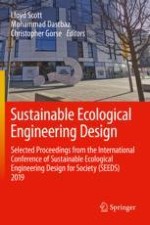2020 | OriginalPaper | Buchkapitel
Understanding Factors Influencing Overheating: The UK’s First Large-Scale Domestic Passivhaus Retrofit
verfasst von : Dean Myers, Christopher Gorse, David Johnston
Erschienen in: Sustainable Ecological Engineering Design
Aktivieren Sie unsere intelligente Suche, um passende Fachinhalte oder Patente zu finden.
Wählen Sie Textabschnitte aus um mit Künstlicher Intelligenz passenden Patente zu finden. powered by
Markieren Sie Textabschnitte, um KI-gestützt weitere passende Inhalte zu finden. powered by
